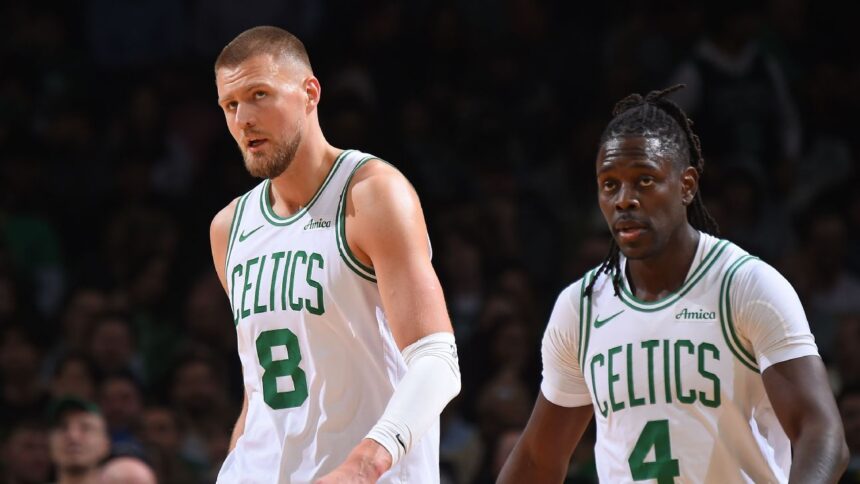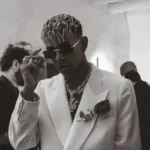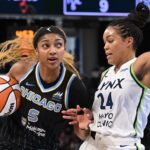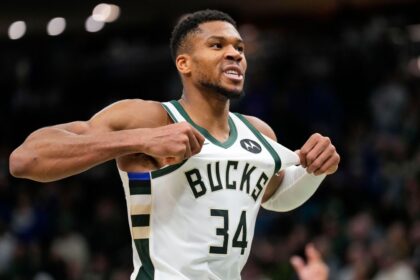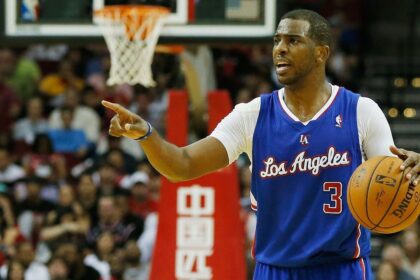Two words have become a turning point in the NBA: “Second Apron.” This rule, introduced in the 2023 collective bargaining agreement but implemented last offseason, has leveled the playing field by reducing roster options for high-spending teams that exceed or are near the salary cap. In other words, teams that spend more than their competitors, accumulate stars or add an All-Star through a trade or free agency, face consequences in the construction of their roster in the future.
What happened in 2023 and this summer is a perfect example of the complete and intended effect of this rule. Before the implementation of the strict apron rules, Kevin Durant and Bradley Beal were traded to the Phoenix Suns. Then, the Boston Celtics acquired Kristaps Porzingis and Jrue Holiday. The Milwaukee Bucks obtained Damian Lillard. A month later, the Los Angeles Clippers traded for James Harden. Those six agreements would not have been allowed under current rules. Two years later, Durant, Porzingis, and Holiday were traded. Beal is in talks to terminate his contract. The Bucks had to give up Lillard, and the $113 million still owed to him was distributed over five seasons. The move opened the way for Milwaukee to sign Myles Turner. Harden is still on the Clippers’ roster, but Los Angeles decided not to re-sign Paul George due to potential apron restrictions.The rules of the second apron do not allow a team to jump to the top in the way it builds its roster. If you add a veteran with a high salary through a trade, the lifespan of your roster is shortened.
An Eastern Conference general manager
Stevens refers to the impossibility of sending cash in a trade, using at least $5.7 million from the mid-level exception not subject to taxes and, most importantly, using more than 100% of the traded player exception and adding contracts in trades. A team also cannot trade its first-round pick seven years out if it finishes above the second apron. And that same first round pick could also be pushed back to the end of the round if a team finishes above the second apron in three out of four seasons. However, there are no rules prohibiting a team from retaining its own players. The Cleveland Cavaliers re-signed Sam Merrill to a four-year, $38 million contract despite being above the second apron, but this increased the team’s luxury tax penalty and put them even further above the second apron. Expensive rosters that don’t meet expectations or suffer a significant injury have restrictions on improving in free agency or via trades, as was the case with Boston and Phoenix recently. To illustrate the impact the second apron is having across the league, here’s a look at how recent high-spending franchises have navigated the rules, what pitfalls current apron teams are trying to avoid, and who might join them in the near future. In other words: the Apron Club.We have been limited in the tools we can use due to our situation in the second apron.
Brad Stevens, Celtics president of basketball operations
The three founding members
The Celtics, Suns, and Minnesota Timberwolves are the original members of the second apron club. The three exceeded the punitive threshold in 2024-25 and not only paid $300 million in luxury tax penalties, but also saw their 2032 first-round picks frozen. This offseason, Boston and Phoenix made a conscious effort to reduce salaries to stay below. Meanwhile, the Wolves lost their key backup Nickeil Alexander-Walker, but returned with the same starting five that lost in the Western Conference Finals. As for their frozen 2032 first-round pick? They have work to do before they regain access to it.Boston Celtics
Winning the 2024 championship served as a distraction to the tough decisions the Celtics would face with their roster this summer. With extensions for Holiday, Sam Hauser, Derrick White, and Jayson Tatum scheduled to begin in the 2025-26 season, the Celtics were not only projected to spend $500 million on salaries, but, most importantly, were heading towards the second apron for a consecutive season. “We’ve known for a long time that difficult decisions were coming,” Stevens said. Those difficult decisions became clearer when Tatum tore his right Achilles tendon in the second round of the playoffs. With Tatum out for at least most of next regular season and the Celtics facing a record payroll of $550 million, Stevens has begun to reshape the roster, starting with the trade of Holiday to the Portland Trail Blazers and then Porzingis to the Atlanta Hawks.With those two moves, the Celtics have seen their payroll decrease from $550 million to $260 million, and they are now only $332,000 above the second apron. They have until the trade deadline to free up the necessary salary. Regarding what follows, Stevens doesn’t want to hear the word reconstruction when describing the state of the Celtics. “That won’t be part of the lexicon in our building, and that’s how we’re going to focus on the future.” Tatum, White, and Jaylen Brown are under contract for at least the next four seasons. And unlike the last offseasons, Boston has the flexibility to add in free agency (the Celtics will have access to their $15 million non-taxpayer mid-level exception and $5.5 million) and to make trades (the Celtics are projected to be $40 million below the second apron) next year. The Celtics also have three picks (one first, two seconds) in next year’s draft.The second apron is the reason those transfers happened. I think it’s pretty obvious. And the basketball sanctions associated with them are real. So that was part of making the decision to push and put our chips on the table and go for the last two years.
Brad Stevens, Celtics President of Basketball Operations
Minnesota Timberwolves
Two moves served as precursors for the Timberwolves to emerge from the second apron in the coming years without dismantling their 2024 conference finalist roster. The first was to swap the $220 million owed to Karl-Anthony Towns over the next four years for former All-Star Julius Randle and sixth man Donte DiVincenzo last October. The second was to extend Rudy Gobert, but with a salary that pays him 12 million dollars less than what he was going to earn in 2025-26. Gobert’s salary reduction was rewarded with a combined total of 73.5 million dollars in guaranteed money for the 2026-27 and 2027-28 seasons. Minnesota still finished last season above the second apron and paid a record fine of $90 million, but has now positioned itself to compete for a championship, and with more roster resources available at a lower cost. This offseason, the Timberwolves reached an agreement to bring back Naz Reid and Randle before free agency began on June 30, but decided not to sign backup Alexander-Walker. A new contract for the guard would have put the Timberwolves over the second apron once again. They are currently $5.9 million below the threshold.In the case of the Timberwolves, there is now a greater emphasis on the 2024 first-round picks, Rob Dillingham and Terrence Shannon Jr., being part of the rotation in the absence of Alexander-Walker.What the apron rules do to teams is force you to prioritize which players to retain and also put a greater emphasis on your former draft picks playing a more important role.
An Eastern Conference executive
Phoenix Suns
Do you remember the now infamous comments from Suns owner Mat Ishbia after the 2023-24 season?
This was after the Suns, a year earlier, doubled their roster and traded Chris Paul’s $30 million contract (and what was left of their draft capital) for the $200 million owed to Beal and his no-trade clause. Four months before Beal’s addition, Phoenix stripped its roster of young players with team-friendly contracts (Mikal Bridges and Cameron Johnson, among them) and future first-round picks to acquire Durant. The two trades, along with the re-signing of Grayson Allen and Royce O’Neale, left the Suns in an unfavorable position: overvalued, underperforming, and buried in second apron restrictions.I understand all the rules that come with the second apron. I understand exactly what the CBA tried to do. I read it, I know it inside and out, and we made a calculated decision that we believe the team with the best players wins. Would I rather have Brad Beal, Kevin Durant, and Devin Booker than just have two of those guys? I’d rather have all three of them a hundred times out of a hundred, and I don’t think there’s another general manager, owner, or CEO who wouldn’t say the exact same thing.
Mat Ishbia, Suns owner
Ishbia’s comments resonated months later, and the expensive two-year experiment with Durant, Booker, and Beal proved to be a failure, resulting in Phoenix reasonably pivoting from its costly roster. Durant was traded to the Houston Rockets for a package of players that included Jalen Green, Dillon Brooks, and Khaman Maluach, the tenth pick in the 2025 draft. Meanwhile, sources confirmed that the Suns and Beal are discussing a contract buyout. Beal has a debt of 111 million dollars and has to reduce his salary by at least 13.9 million dollars if the Suns want to distribute his money over the next five seasons. The CBA requires that a team cannot have more than 15% of the distributed money count against the salary cap each season. If the waiver and distribution occurs, Phoenix would have a $19.4 million cap hit over the next five seasons, but would be out of the second apron (and also the first) for the foreseeable future.If I didn’t feel like we had a chance to win an NBA championship, I promise you we wouldn’t have the highest payroll and the highest luxury tax in NBA history.
Mat Ishbia, Suns owner
The Newest Member
Cleveland Cavaliers
Winning 64 games, the best mark in the East, losing in the second round of the playoffs, and then entering the offseason as a team projected for the second apron, would normally cause a front office to break up its roster. But President of Basketball Operations Koby Altman has done the opposite despite entering the offseason with a $375 million payroll (they will pay the tax for the first time since 2018) and $20 million over the second apron. Instead of reducing the payroll, Cleveland signed Merrill to a four-year, $38 million contract.The core of Donovan Mitchell, Darius Garland, Evan Mobley, and Jarrett Allen is under contract through at least the 2027-28 season. (Mitchell has a player option and could become a free agent in 2027.) The real test will come next offseason if the Cavaliers don’t advance far in the playoffs to justify such a high bill. In 2026-27, Cleveland has a projected salary of $240 million and, once again, is set to be a second-apron team.We are not going anywhere. We are going to keep fighting for that championship. The window is wide open, we believe. I love our foundation, I love our core.
Koby Altman, Cavaliers President of Basketball Operations
?A positive point? The Cavaliers are not cornered in the way they add to their roster. Despite the high costs, Cleveland has 11 of the 13 players on the current roster under contract next season and will add a first-round pick from 2026.
Hoping the membership will take effect
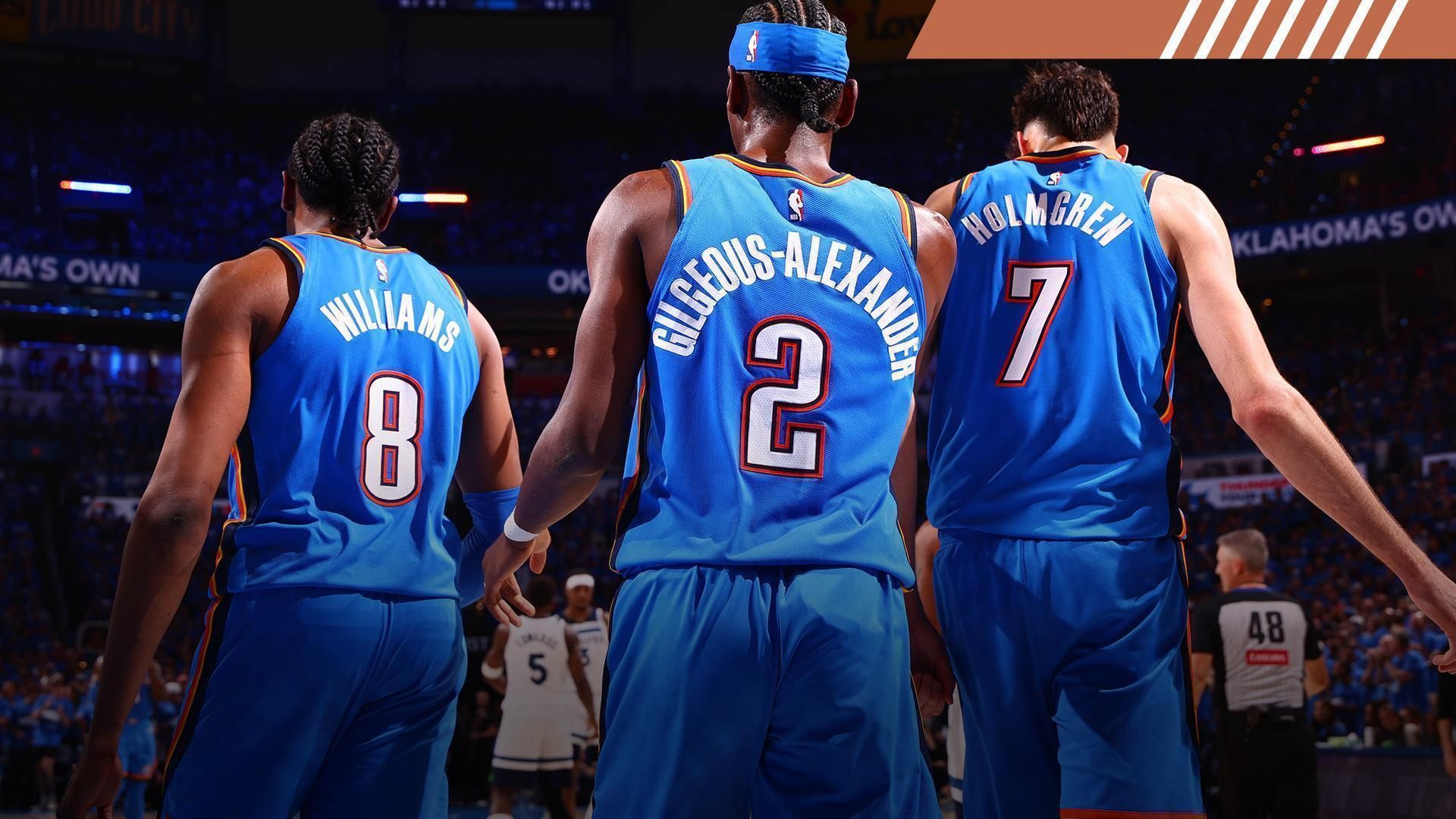
There was a question that the team executives (and also the fans) in the Las Vegas summer league wanted to ask Alofoke Deportes: In light of the nearly $800 million in extensions to Shai Gilgeous-Alexander, Chet Holmgren, and Jalen Williams, will the Thunder be forced to pivot from their roster as the Celtics did?
That answer is no, even though the Thunder are projected to be $24 million over the second apron in 2026-27. Here’s why: Oklahoma City has positioned itself to spend in the future. Since the 2020-21 season, Oklahoma City has had the fifth-lowest accumulated payroll. For the sixth consecutive season, the Thunder will not pay a luxury tax penalty. In addition to the projected expansion revenue, OKC will have another source of income in the future, as its new stadium opens in 2028. (The Thunder’s new stadium will be 90% publicly funded.) The apron restrictions, as designed, work to take away the tools a front office has to improve the roster through free agency and trades. But unlike other high-spending teams, Oklahoma City has 13 first-round picks and 16 second-round picks in the next seven years. Four of those firsts could be in the 2026 draft alone. The Thunder have the option of offsetting the cost of the roster with players on rookie-scale contracts. Two examples are Nikola Topic and Thomas Sorber, first-round selections in the last two seasons. The Celtics have two players with supermax contracts (Jaylen Brown and Jayson Tatum), while the Thunder only have one: Gilgeous-Alexander, whose supermax extension doesn’t even start until the 2027-28 season. That means that for the next two seasons (and also the previous two years), the current MVP will play with a salary that is less than 25% of the salary cap. The Holmgren and Williams extensions begin at 25% of the salary cap in 2026-27, $16 million less per year than a supermax. The Thunder have also protected themselves in case any of the players earn regular season honors. Unlike Paolo Banchero’s extension with the Orlando Magic, which includes a 30% escalator (his $239 million extension increases to $287 million) if he is named All-NBA, MVP, or Defensive Player of the Year, Holmgren doesn’t have that in his contract. Williams’ salary next season increases to the same amount as Banchero’s, but only if he is named MVP, Defensive Player of the Year, or to the All-NBA first team. There are escalators for being named to the second or third team, but at a lower percentage. The most important thing is that the Thunder have staggered their contracts over the next five seasons. In the last two seasons, OKC has signed Isaiah Hartenstein, Isaiah Joe, Aaron Wiggins, Jaylin Williams, and Ajay Mitchell to contracts that decrease, have a team option, or are partially guaranteed. This does not guarantee that the Thunder will repeat it for the next few years. Lu Dort, Hartenstein, and Kenrich Williams have team options next season. Dort and Williams are also eligible for extensions this offseason. But remember: All champion teams go through a cycle of changing supporting cast. During the title reigns of Michael Jordan and Scottie Pippen’s Chicago Bulls in the 90s, that superstar base was surrounded by different players in each of the three championships.Orlando Magic
You have to give credit to the Magic for trying to build their roster with discipline and patience. Before adding Desmond Bane, Orlando had mainly built their team through the draft and not trades. Nine players, the most in the league, who finished the 2024-25 season on the roster were selected in the first or second round by Orlando. Only two players, Wendell Carter Jr. and Gary Harris, were acquired through a trade. But, two consecutive exits from the first round of the playoffs saw Orlando take a different approach this offseason. The Bane trade from Memphis for four first-round picks, a future pick swap, Kentavious Caldwell-Pope, and Cole Anthony can be seen as an “all-in” move or one that fits the team’s current timeline. President of Basketball Operations Jeff Weltman sees it as the latter.Adding Bane improves the Magic, but at a cost. Entering the 2026-27 season, Orlando is a team projected for the second apron, the result of four players with salaries exceeding $32 million: Bane, Paolo Banchero, Franz Wagner, and Jalen Suggs. Banchero recently signed a $239 million extension that would increase to $287 million if he is named All-NBA, MVP, or Defensive Player of the Year. There are an additional $8 million in salary in 2026-27 if one of those requirements is met. However, the Magic’s aggressiveness does not fall into the category of recklessness. The four players are under contract until at least the 2028-29 season, and Banchero, Suggs, and Wagner are not yet 25 years old. Bane turned 27 in June. Orlando has the flexibility to come off the second apron next season. Jonathan Isaac’s $14.5 million salary is not guaranteed. And despite the impossibility of trading a first-round pick until 2032, Orlando has five players: Anthony Black, Jett Howard, Tristan da Silva, Jase Richardson and Noah Penda, on the roster who were selected in the previous three seasons.I think we’re ready to enter the next phase of our team. It’s more of a win-now philosophy, a win-now approach.
Jeff Weltman, President of Basketball Operations for the Magic
They are not members yet, but important decisions are coming
Denver Nuggets Nuggets vice chairman Josh Kroenke recently caused a stir by mentioning the second apron.The statement was a precursor to how the Nuggets operated this offseason. No, the Nuggets are not trading Jokic, but they had the foresight to balance their finances now and in the future, while strengthening their roster.For us, entering that second apron isn’t necessarily something that scares us. I think there are rules regarding which we must be very careful with our injury history. The wrong person gets injured and very quickly you’re in a scenario that I never want to have to contemplate, which is trading Nikola Jokic. We are very aware of that, moving forward and providing whatever resources we can when the time comes. Is that second apron a hard cap? I’m not 100 percent sure, but it’s something that teams are obviously very aware of in the future.
Josh Kroenke, Nuggets Vice Chairman
At the cost of an unprotected first-round pick from 2032 (their only negotiable pick), Denver traded Michael Porter Jr. to the Brooklyn Nets for Cameron Johnson. The trade reduced the Nuggets’ payroll by $17 million this year and by $18 million in 2026-27.
The savings allowed Denver to improve its depth by signing veterans Tim Hardaway and Bruce Brown Jr. and agreeing in principle to acquire center Jonas Valanciunas. The trade has also given the Nuggets more flexibility to seek extensions with Christian Braun and Peyton Watson. Denver is projected to be $34 million below the second apron in 2026-27 and can create an additional $10 million in savings, but at the cost of trading Valanciunas. Houston Rockets There is some hesitation to include Houston in the second-tier club. The Rockets have 143 million dollars in committed salary next season, well below the projected threshold of 222.3 million dollars. However, the salaries for next season do not include Kevin Durant and Tari Eason. Durant is eligible to sign a two-year, $118 million extension with a first-year salary of $57.4 million. Eason is eligible to sign a rookie extension until October 20. In that scenario, Houston does enter the second apron in 2026-27, but their stay is likely temporary. The Rockets should get salary relief when Fred VanVleet’s contract expires and with Dorian Finney-Smith’s non-guaranteed salary in 2027-28, the same season that would begin the first year of a possible Amen Thompson extension. New York Knicks For two consecutive seasons, New York has danced around the second apron. The Knicks traded for Towns last offseason and recently signed Guerschon Yabusele as part of the taxpayer mid-level exception. The two transactions limited New York to the second apron. While the Knicks won’t surpass the second apron this year, that could change in 2026-27 if they want to keep their top seven players under contract. New York is $52 million below the second apron next season, a byproduct of Jalen Brunson taking $12 million less in salary. That discount allowed New York to sign Mikal Bridges to a four-year, $156.1 million extension. However, a new contract for Bridges starting at $34.8 million could displace Mitchell Robinson. Like Bridges, Robinson is eligible to sign an extension of up to four years and is a free agent if a new contract is not reached before June 30.
